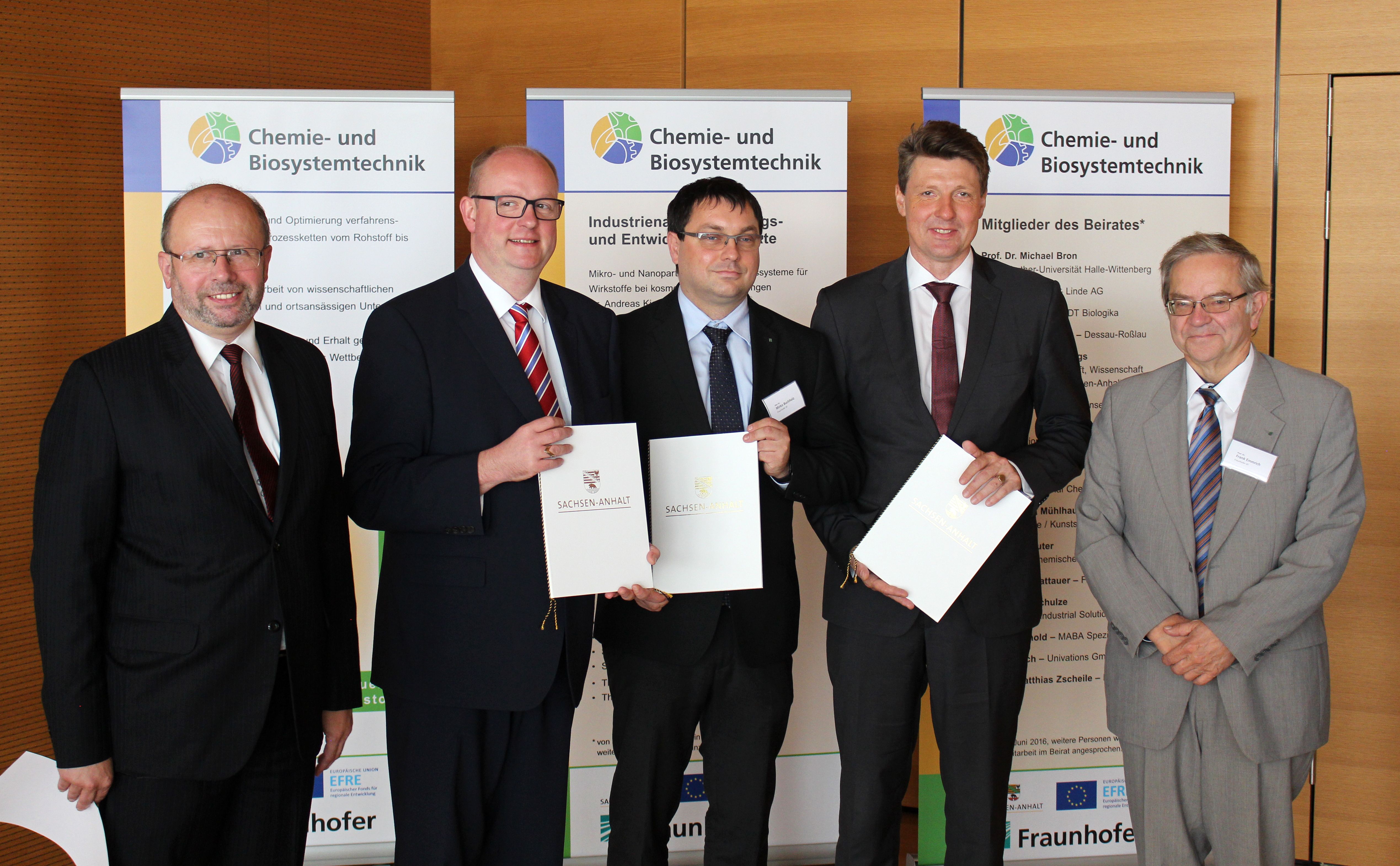From tablet to topical gel – researchers at the Fraunhofer IZI in Halle (Saale) receive funding to develop new topical application systems for active ingredients
On 23 September 2016, Saxony-Anhalt's Minister for Economic Affairs and Science Jörg Felgner visited the Fraunhofer IMWS, where he announced the approval of three grants worth a total of 1.2 million euros. One of these grants will be used to support the Fraunhofer Institute for Cell Therapy and Immunology in its project "Micro and nanoparticle-based application systems for active ingredients in dentalcosmetic and therapeutic applications".



The topical administration of active ingredients in the oral region continues to present a huge challenge in terms of cosmetic and therapeutic applications. The previously achieved retention time of the dosage form, and thus the medicinal substance's duration of action, is too short for several types of application. In some medically relevant indications, the active ingredient is therefore administered systemically, i.e. affecting the entire body, rather than locally.
Periodontitis can be taken as an example here: as one of the most common infectious diseases around the world, it can not only lead to the destruction of the periodontium but also increase the risk of developing systemic diseases such as diabetes and cardiovascular diseases. In severe cases, the systemic administration of broad-spectrum antibiotics is currently recommended as an adjuvant therapy to the mechanical removal of microbial plaque in the periodontal pocket. The high doses required here lead to side effects, e.g. the modification and destruction of the intestinal flora or the formation of a resistance, which entail ever greater risks in the everyday clinical setting of industrial and newly industrialized countries.
In order to avoid this kind of systemic administration, a type of application is needed which allows the dentist to apply a suitable antibiotic or antiseptic topically, simply and as painlessly as possible while still maintaining the required level of active substance for the necessary period of time. The application should also be sufficiently affordable to be covered by statutory health insurance.
The project "Micro and nanoparticle-based application systems for active ingredients in dental-cosmetic and therapeutic applications" addresses precisely this problem. "To begin with, a new formulation platform is to be developed and tested using an established active ingredient, i.e. a kind of transport medium for the active ingredient that facilitates long-lasting, local release. This platform is then planned to be expanded at a later stage to cover a range of different substances and purposes. Its subsequent use in preventive or selectively antiseptic oral hygiene products is envisaged here," explains Dr. Mirko Buchholz, Head of the Drug Design and Analytical Chemistry Unit within the Department of Drug Design and Target Validation at the Fraunhofer IZI in Halle (Saale), who was awarded the grant together with his team.
The project will be conducted as a close cooperation between the Fraunhofer Institute for Cell Therapy and Immunology IZI, Department of Drug Design and Target Validation in Halle and the Fraunhofer Institute for Microstructure of Materials and Systems IMWS (www.imws.fraunhofer.de) as part of the Fraunhofer's National High Performance Center for Chemistry and Biosystems Engineering (CBS) in Halle (Saale), which was founded in the summer, and funded by the State of Saxony-Anhalt through the allocation of an ERDF grant. Experts from the fields of pharmaceutical technology (Institute of Pharmacy at the Martin Luther University of Halle-Wittenberg) and dentistry (dentistry clinics at the University of Bern) will be closely involved in the development work from the very beginning, offering both physician and patient perspectives as competent partners for practice-relevant issues.
Further contact
Dr. Mirko Buchholz
Phone +49 345 131428-25
mirko.buchholz@izi.fraunhofer.de